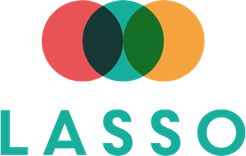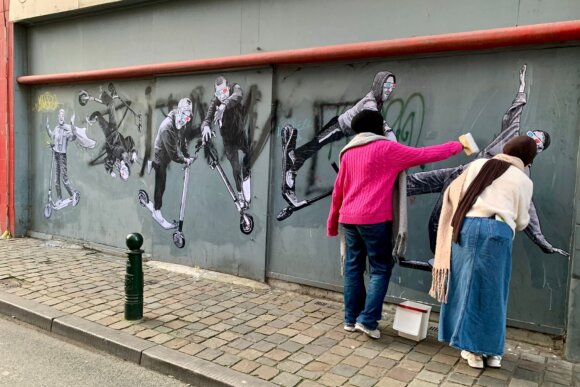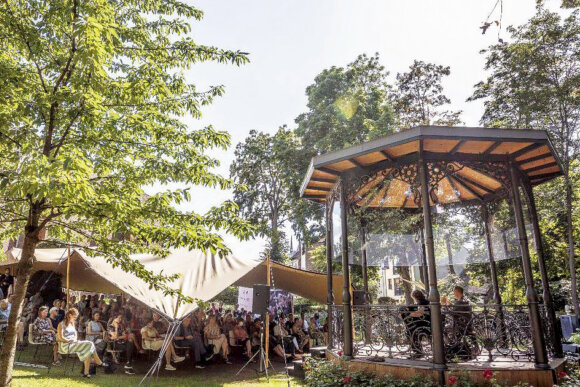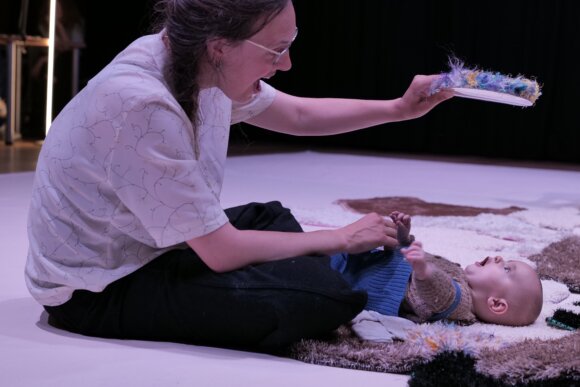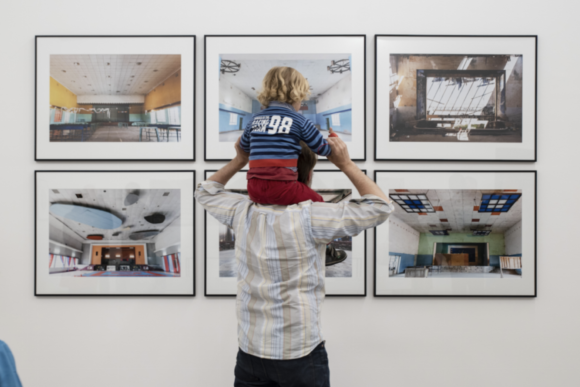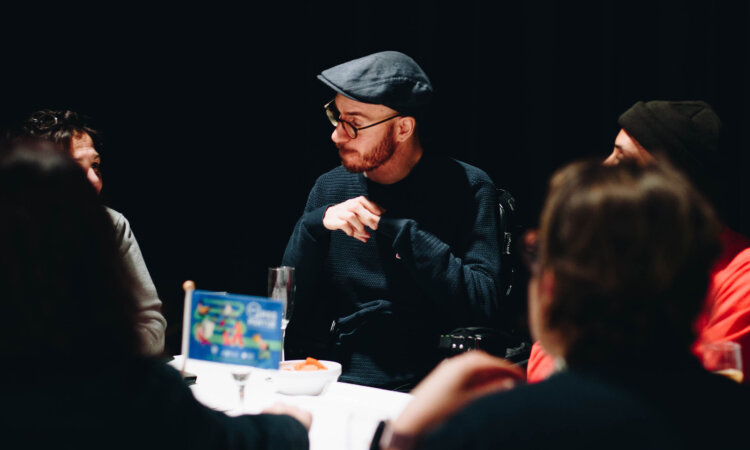
Interview | Xander Berbé
Stephanie Lemmens
On behalf of Lasso, storyteller Stephanie spoke to people who are working hard to promote inclusion. And at Lasso, no one does this more than Xander Berbé. Xander is 33, lives in the heart of Brussels and has a love for art and culture. As a project collaborator, he works on Art Inclusive, and as a wheelchair user, he is an expert by experience.
Xander has been working on Art Inclusive for a year now. When he saw the job opening at Lasso, he immediately knew: "This one’s for me!" He enjoys taking part in cultural activities and believes that more people with disabilities should have the opportunity to do so. He previously worked as communications officer at Onafhankelijk Leven, an organisation that promotes the rights of people with disabilities. He wanted to continue working on the theme, but from a more practical angle: "Lasso doesn't get lost in big strategies, but looks at how things can be improved in real life. Here, I focus on what is actually possible to involve people with disabilities more in cultural life."

"I believe that I can add value to Lasso, and more specifically to the Art Inclusive project, partly because of my disability." However, Xander does not want to overestimate this: "Just because I’m in a wheelchair and know what is needed to make culture more accessible to wheelchair users, doesn’t mean that I know what people with other disabilities need."
Experimental projects
Xander: "When I started my job as a project collaborator, I had a lot of conversations with both cultural houses and welfare organisations. Some conversations were more introductory, while the more concrete ones often resulted in experimental projects. In such a project, we bring organisations together based on the needs of a group of people with disabilities. Think, for example, of a project involving an organisation that works with people with disabilities and a cultural centre or artist."
In my work, I mainly see organisations that are already doing well or are working enthusiastically on improvements.
- Xander Berbé
His first experimental project was with Zonnelied. "The great thing about this project was that we were able to organise something for a 'difficult' group: people with multiple disabilities. A group that you initially think cannot or does not want to engage with art." Another project was a collaboration between Hubbie, an artist and students from the Brussels Atheneum. The project revolved around street art in the Anneessens neighbourhood. "The artist in question had little experience with people with disabilities, but was very motivated and found interesting angles to work with the group." A collaboration with Toop also emerged, starting with a few small outings: "During the autumn break, the group went to an interactive performance at the Filem’On film festival. The audience had to put on a special sweater and were instructed to touch themselves and each other via the dots on the sweater." A very playful way to interact with each other, says Xander.
A learning network and moments of inspiration
Xander notes that some cultural institutions are already taking significant steps to make their organisation or event more accessible, and have a great deal of knowledge and expertise. "At Lasso, we are looking for ways to share this information even more."
For example, Lasso organises a learning network in which cultural workers and experts by experience, people with disabilities from Groep INTRO, think about how culture can be made more accessible. "The learning network met several times last year. We are still looking for the best way to make these networks work optimally, so that participants can gain maximum inspiration from each other."
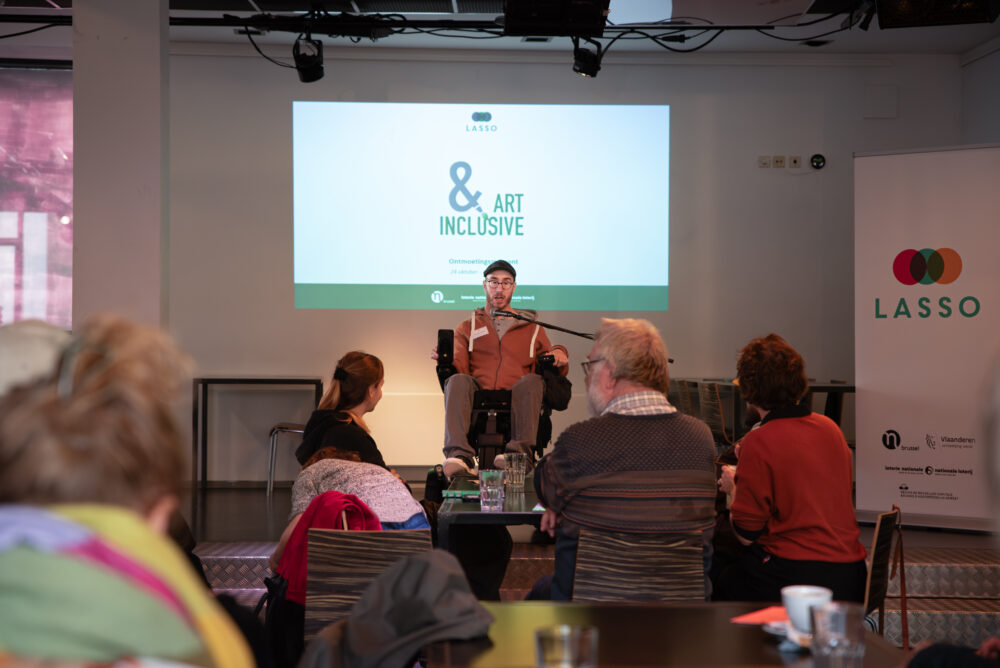
Lasso also organises meetings and inspirational events. "For example, we brought cultural and welfare organisations and people with disabilities together at the KVS, and organised an info session at the AB about accessible communication. One of the topics was: 'How do you write to volunteers, who often work on a temporary basis on a project or festival, about how they can best inform and help people with disabilities?'"
Accessibility in the cultural sector
According to Xander, there is a small group of frontrunners in Brussels who are strongly committed to accessibility. However, there are pitfalls, he says: "Some organisations say they are very accessible, but in the end it turns out that their infrastructure or event is only accessible to wheelchair users, and that no consideration is given to people with other disabilities. Or they get away with a single sentence on their website." Xander is mainly positive though: "In my work, I mostly see organisations that are already doing well or are working enthusiastically on improvements."
When asked how the frontrunners distinguish themselves from the rest, Xander emphasises that they took the time and invested the resources to seek guidance from experts. He agrees that Lasso often recommends working with an organisation that works with people with disabilities. "They are the real experts, who ensure that you don't always look at your organisation through your own eyes. This allows you to have your operations reviewed by people with disabilities, or to develop a performance from scratch with their input."
As an organisation, you don't have to be accessible to everyone in every area overnight. But you can take a step in the right direction every year!
- Xander Berbé
According to Xander, the frontrunners are followed by a large group that is partially accessible or is still investigating how they can work in a more inclusive way. They don't always have the resources or time to work on accessibility. Sometimes the motivation lies mainly with one employee. If Xander could give the latter organisations one piece of advice, it would be to make time and think about where they want to go with their organisation in this area from the outset. "That doesn't mean that, as an organisation, you have to be accessible in all areas and to everyone from one day to the next. But taking a step in the right direction every year is possible!"
A look back
During the past project year, Xander got to know a wide range of organisations: "Although I am quite active in Brussels, I often go to the same places, while there are so many other places where you can experience culture." During his journey of discovery, Xander also encountered obstacles. But he learned as he went along and adapted his approach. "In the beginning, I sent organisations an email asking if their building was wheelchair-friendly. I don't do that anymore. It saves me an extra task when I visit an organisation and it can be extra motivation for those organisations to do more about accessibility or to communicate more clearly about it on their website." In short, it's a learning process for both Xander and the organisation.
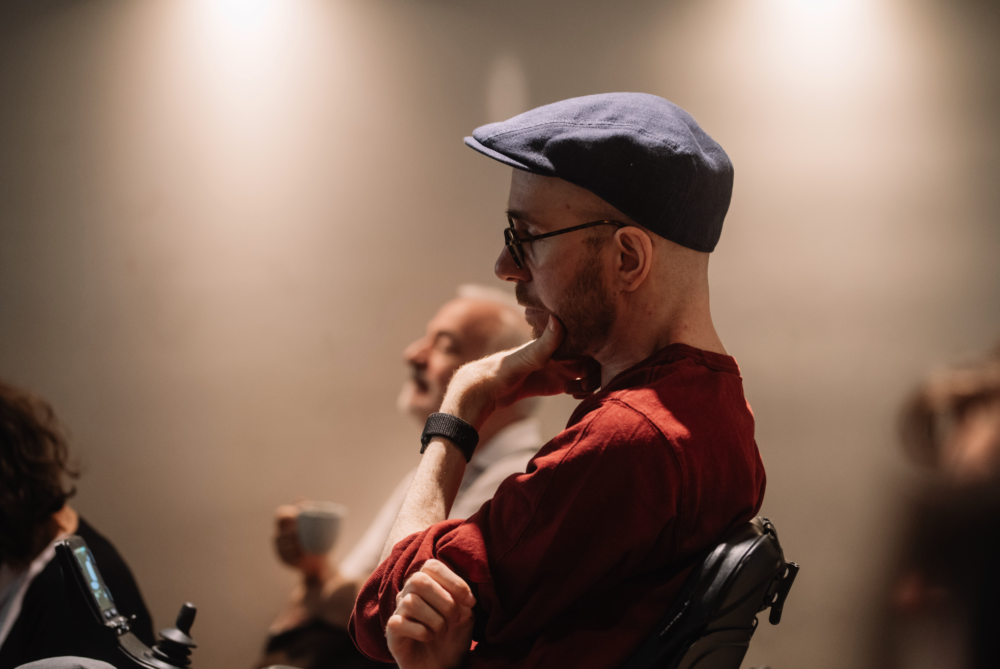
Xander used to think that people with disabilities should make more effort to integrate, but he now thinks differently. Through his role at Lasso, he has become increasingly convinced that society needs to change, not people with disabilities. He has therefore studied inclusion and the barriers experienced by people with different disabilities in greater depth. Among other things, the book 'Handicap: een bevrijding' (Disability: a liberation) by Anaïs van Ertvelde made a big impression on him. The book criticises society for not being tailored to people with disabilities, but rather to those who are mobile and have no disabilities.
Xander: "If you have to work so hard for so long to belong, to be seen, then you do indeed give up after a while. If going to a museum is tiring, then after a while you stop doing it. If, on the other hand, society focuses on people with disabilities, whatever those disabilities may be, then you automatically get a warmer, more inclusive society for everyone."
